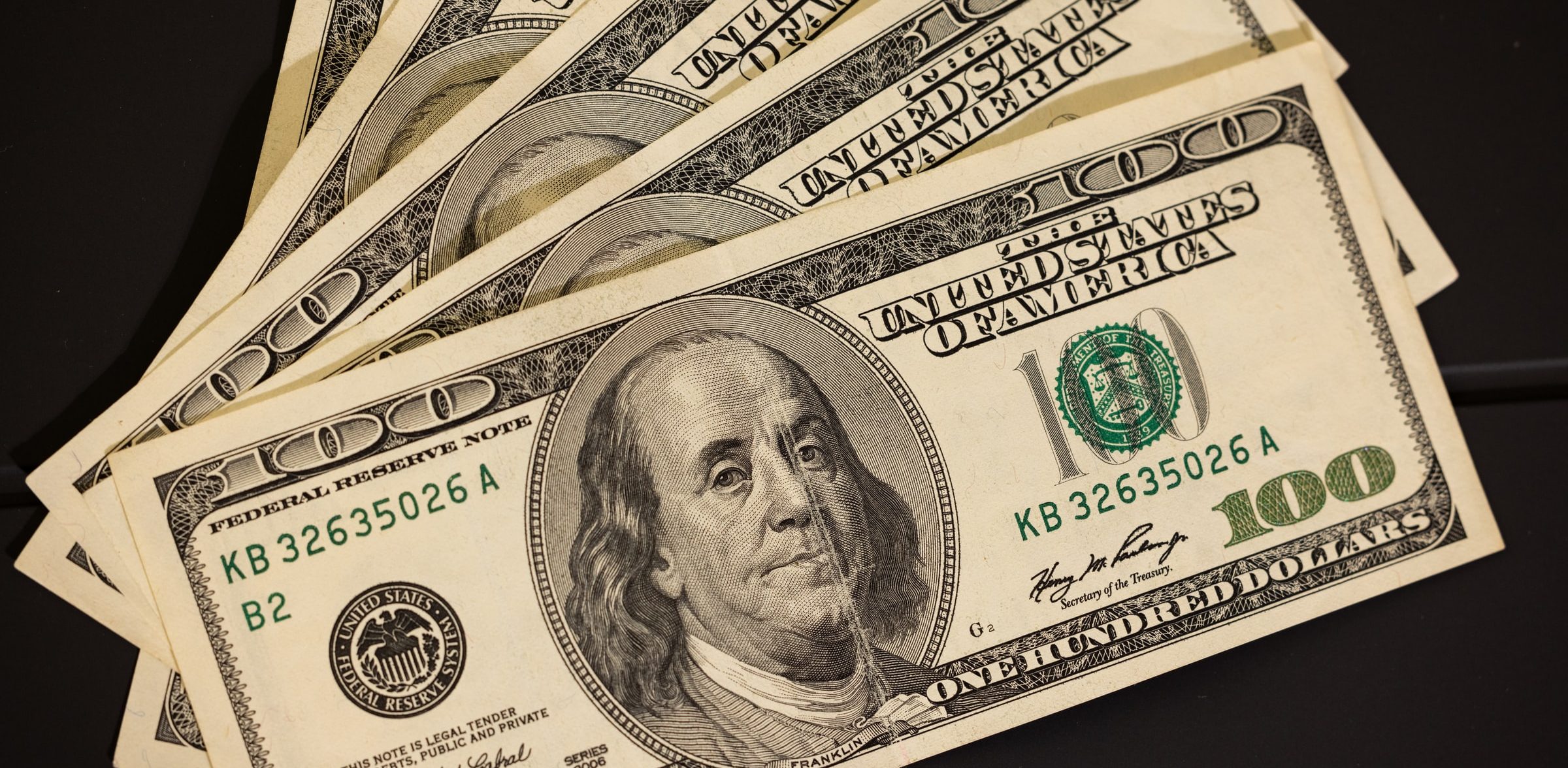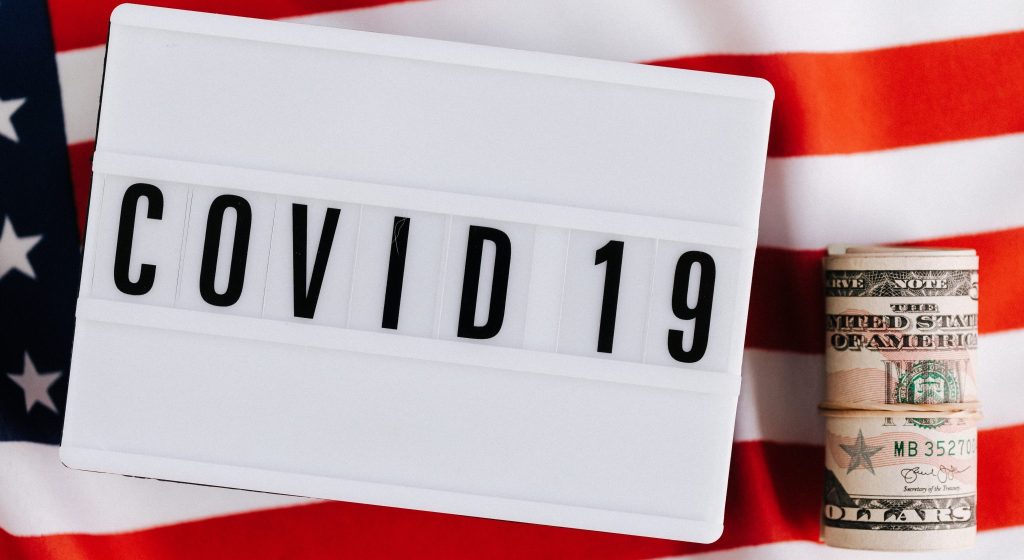As the U.S. inflation rate hits its highest peak since the 2008 global financial crisis, companies and individuals are wondering if it will be temporary like 2008 or last for the long term.
Inflation has reared its ugly head in the United States this year, and despite the vaccine rollout in full swing, COVID-19 infections are threatening a return. The Biden administration is working hard to curb the fallout from this inflationary cycle and cut the current rate by more than half to historical averages.
Many analysts now label inflation in the U.S. economy as the ultimate litmus test that the Biden administration will be judged by in retrospect.
Some say current government and Federal Reserve policies are raising inflationary pressures, fueled by multi-trillion-dollar spending bills designed to spur GDP growth. However, some see inflation as a positive development. It “can be seen as evidence that President Biden’s economic and health policies are working,” wrote CNN Business Reporter Matt Egan in an analysis in late May. Theoretical economic narratives agree, seeing that rising inflation is driven by high demand, which is resolved by increasing supply and economic growth.
Meanwhile, the Federal Reserve maintained interest rates since March 2020 in another attempt to entice more to invest and spend in the U.S. economy rather than park their cash in banks.
What is different with the current inflationary boom is that global logistics are suffering delays, there is a worldwide microchip shortage, and amid a resurgence of COVID-19, there are doubts over whether the U.S. can sustain its reopening of the economy.
Price panic
After hitting a 13-year high in June, annual consumer inflation, based on a basket of retail goods and services, remained elevated in July, according to the U.S. Bureau of Labor Statistics (BLS), with prices up 5.4% from a year earlier. The pace of wholesale inflation, which tracks bulk goods and services delivered by wholesalers over the past year, “moved up to 7.8% from 7.3% for the 12 months ended in July … It marks the largest jump since 12-month data was first calculated in November 2010,” wrote Ben Scheffer for the IBT’s online portal in August.
Over the past year, food prices rose 3.5%, with eggs and meat up over 5%; gasoline 22%; lumber 250%; housing costs 11%; and new cars 9%, the highest in 68 years.
Other goods, from household items, baby care, and general merchandise, were up 5.2% and 7.2% from this time last year. The cost of eating out jumped 3.7% and coffee futures are up 24% since October. Even growing your own food has surged in price, with the cost of seeds and potted plants jumping 10.5%.
A primary reason for those high figures, by U.S. standards, is that lockdowns in 2020 dropped inflation from 2.5% to nearly zero at the height of the closures. It then inched up to 1.75% by the end of last year.
“The annual rate of inflation has seemingly peaked, but the details show a broadening out of price pressures,” chief international economist at ING James Knightley wrote in a July note to clients. “This indicates inflation is likely to be more persistent and pervasive than predicted by the Federal Reserve.”
On the street, the public radio network NPR surveyed voters across Northampton County, Pennsylvania, which Biden narrowly won in 2020. The majority perceived that the “economy is struggling [as] prices have been going up.” That despite government figures showing that the US economy has been growing since the second half of 2020, surpassing pre-pandemic rates, according to the U.S. Bureau of Economic Analysis.
Spending bills
The $3.5 trillion infrastructure package, currently debated in parliament, unlike the $1.9 trillion American Rescue Plan Act ratified in March, is “not designed to give the economy a short-term sugar high [and are instead] long-term investments aimed at boosting growth and productivity while easing inequality and worker shortages,” wrote Egan. However, there is debate over the relative prudence of high government spending.
That monetary policy is stimulating the economy more aggressively than ever since the Great Depression, noted Stephen Miran of the Wall Street Journal. “Households also have more than $2.5 trillion in excess savings they are beginning to spend, unemployment benefits have pushed up the wage demands of new hires, and the economy is still turbocharged from the wildly excessive American Rescue Plan Act, passed this spring.”
“Policymakers are leaning forward with stimulus as favorable economic winds blow at their backs,” said Miran. He adds that if Biden’s initiatives pass, “it will likely heap more fuel on the inflation fire.”
The concern is that while infrastructure will enhance the economy’s supply side, keeping inflation low in the long term, it could do the opposite in the short term. Road construction is a case in point, which consumes a lot of raw material and creates temporary jobs without generating revenue until years later when businesses invest in the surrounding areas.
The U.S. government is focused on the long-term results. “These steps will enhance our productivity — raising wages without raising prices,” Biden said in a speech at the White House last month. “That won’t increase inflation. It will take the pressure off of [it], give a boost to our workforce, which leads to lower prices in the years ahead. So if your primary concern right now is inflation, you should be even more enthusiastic about this plan.”
Logistics lag
With the Fed’s strong stimulus push, “demand is outpacing the supply capacity of the economy given the scarring that the pandemic has caused, as evidenced in production bottlenecks and labor shortages,” Knightley said.
Competition for workers puts upward pressure on wages, while record-low raw material supplies, order backlogs, and extended delivery times further stress supply chains.
“The worker shortage is contributing to supply-chain problems and raising rates for shipping, as well as causing delays in getting products to customers. Rising energy prices are feeding into higher production and transportation costs and ultimately consumer prices,” said a report from the editorial board of the Wall Street Journal last month.
One of the significant factors for the current inflation is an imbalance between supply and demand. “Emerging from the pandemic, we are in a period of high demand boosted by unprecedented government largesse … In June of this year, personal savings were nearly $400 billion higher than in January 2020. People have money, and now they’re spending it,” wrote Andy Puzder, a board member of the Job Creators Network, in an opinion piece for Real Clear Politics last month. “But the pandemic disrupted production and order flow, hobbling supply chains. Simply, people were unable to work and businesses were unable to anticipate future demand. Bad policies that pay people more not to work than they can make with a job have exacerbated the supply chain disruptions. You can’t produce and deliver goods if you can’t find workers.”
“Costs are increasing throughout the economy and the strength of demand means that companies have a sense of more pricing power [than] they have experienced in years,” according to Knightley. Data from the National Federation of Independent Businesses shows that the proportion of companies raising prices and expecting to raise them further in the coming months is at a 40-year high. “As such, imminent major declines in inflation look unlikely,” he concluded.
Temporary glitch?
Famed economist Milton Friedman believes “inflation is always and everywhere a monetary phenomenon.” Or rather, the more money there is, the less it’s worth and the more it takes to purchase goods, which hurts low and middle-income citizens and GDP. Since February 2020, the money supply has increased by 32%, according to Puzder.
Treasury Secretary Janet Yellen has repeatedly played down fears of inflation. Federal Reserve Bank Chairman Jerome Powell calls these supply chain disruptions “temporary bottlenecks,” such as the shortage of computer chips limiting automobile production. The White House agrees. However, Pudzer argues that even if inflation remains for a few months, it’s “bad news for American workers.”
The Clinton-era Treasury Secretary, Larry Summers, has been sounding the alarm on inflation via a series of increasingly urgent warnings, calling it the “primary risk facing the U.S. economy.” He said the Fed might need to begin tightening policy and urged the Biden administration to “move past emergency policies,” including addressing a growing shortage of workers.
“The primary driver of the current inflation comes through money printing by the Fed. The Fed nearly doubled its bond purchases since the beginning of the pandemic, pumping almost $4 trillion into the economy. That is about as much as the Fed purchased between 2008 and 2014, and during the worst of the Great Recession,” Kristin Tate wrote in The Hill in May.
The Fed effectively monetizes the federal government’s debt, “creating both a cover for higher deficits and increasing the money supply further. Since 2019, the national debt has jumped from just under 80% of gross domestic product to over 100%,” she said.
Transitory or prolonged?
Summers of NPR believes the government must make effective decisions to curb inflation rates. “I don’t think [inflation] will go away of its own accord,” Summers told NPR last month. “The risks that we will have excessive inflation, that we will have a downturn, or that we will find ourselves in a stagflation situation, I think, are very substantial.”
While the Fed “expects prices to cool off after the initial shock of the reopening,” Egan noted in his analysis, “There is no inflation playbook following a once-in-a-century pandemic. No one truly knows how transitory inflation will be.”
An economics professor at the University of Massachusetts, Richard Wolff, said that it’s hard to pin inflation on one factor on the podcast Breaking Points this month. “Inflation is a major economic event, it never has one cause or one key cause. Lots of things have to come together to produce inflation. We are a society so dependent on credit that we are flooding the economy with the money to sustain credit, that money could move and become something chasing goods and services and produce inflation.”
Jared Bernstein, a member of the White House Council of Economic Advisers, maintained that “we have to remind folks that we are in the midst of a strong and robust recovery that clearly would not have occurred with this speed had we not helped get shots in arms and checks in pockets,” touting steady economic growth helped along by vaccinations and stimulus checks.
“How to map these facts onto messaging is a challenge,” he said, “especially in a period when these temporary price pressures are hitting people in ways that they recognize.”







